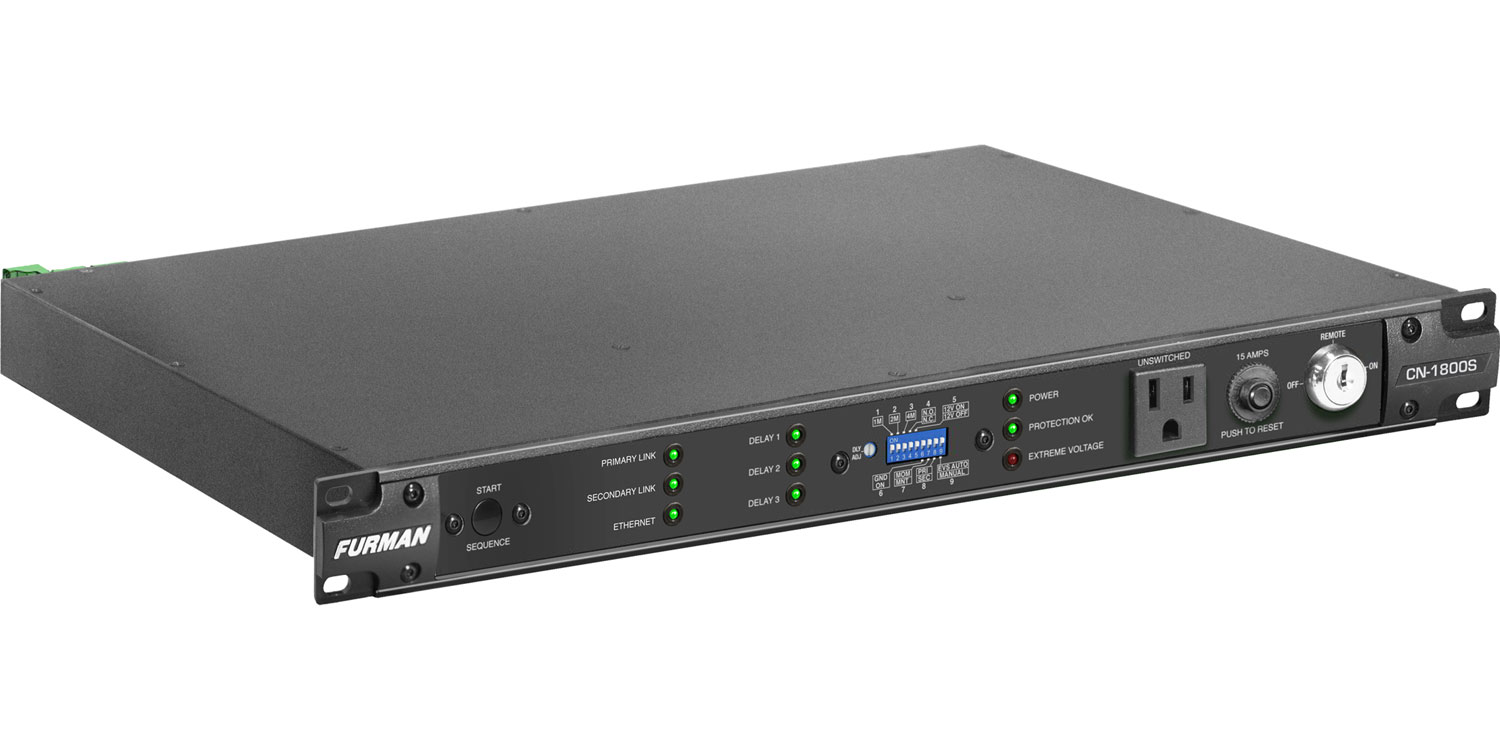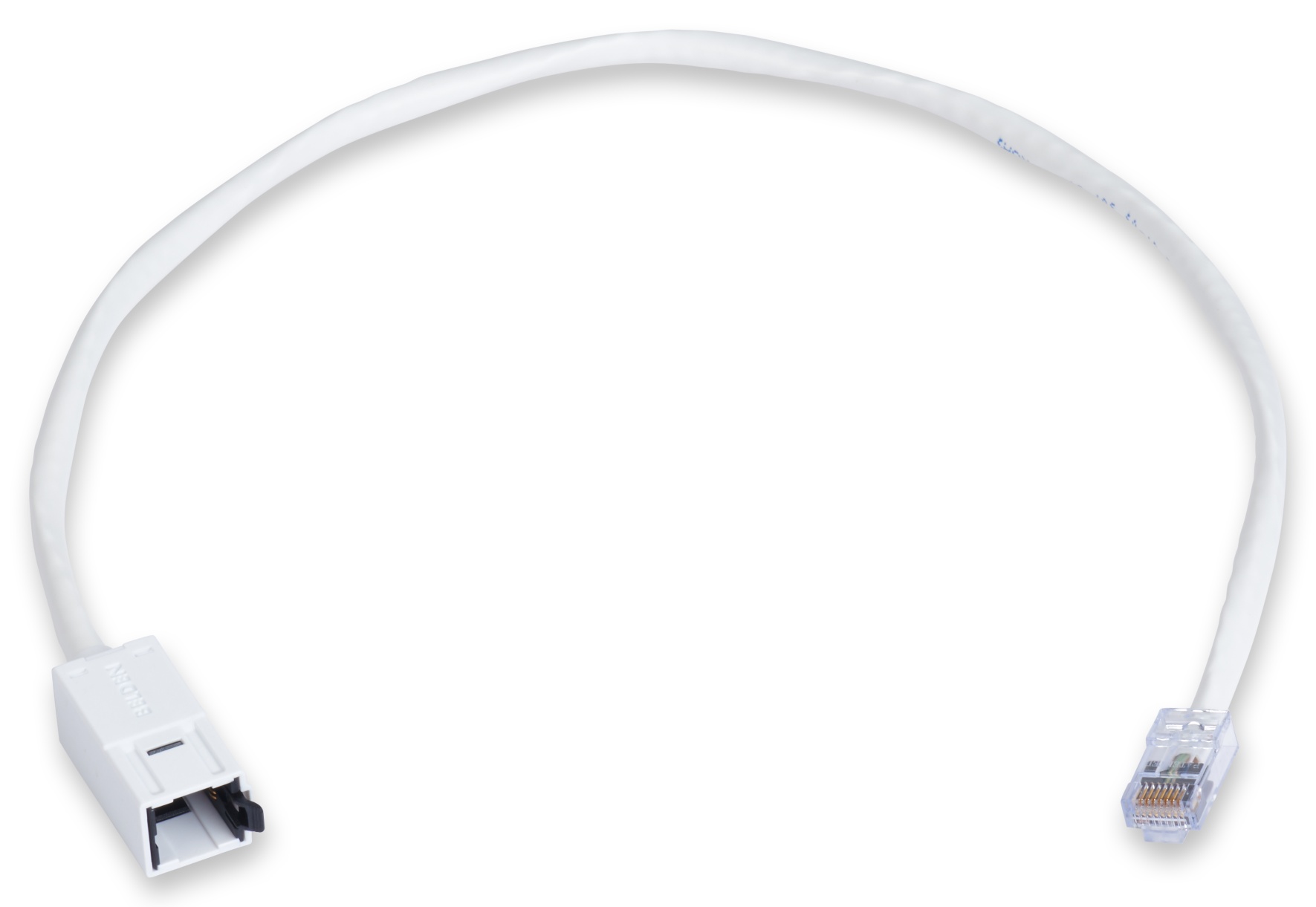Opening the Curtain
Getting in Front of the Power and Cable Management That’s Behind Every Installation
Cabling and power may be the backbone of every project, but, as with many of the important things in life, these sometimes unglamorous pieces are often invisible to the end user. Of course, they’ll know immediately if these elements aren’t working, and they’ll probably make their displeasure known to everyone involved in the installation. But trying to explain how vital they are at the start isn’t always the easiest of tasks.
“Power management can be concerning for integrators in two main ways: finding the right solution for the project, and highlighting to their client the need for protection,” said Lauren Simmen, director of marketing at SurgeX. “Security, AV, communication, and other large systems in commercial environments such as retail stores, places of worship, and office spaces need power conditioning and protection to safeguard the lifespan of the devices, as well as to prevent system downtime from outages and degradation from daily surges, noise, and power fluctuations—but it can be challenging for integrators to showcase these challenges and benefits to the customer.”
What concerns the integrator should concern the end user, but it all starts with the manufacturer. Joe da Silva, director of product marketing, Extron, points to power reliability, accessibility, and management within the space—whether it’s small or large—as the three main areas to address.
“The power supply is obviously a critical component for any active device,” he said. “It only makes sense that the design of the power supply receives as much care and attention as the rest of the product. A great product is useless if the power supply fails.”
Of concern to the integrator, once those products are specified for a project, is the growing number of devices across system designs, da Silva noted.
“Each device must be powered, including at all remote locations,” he added. “If the general contractor didn’t account for this, there can be a serious lack of outlets at the various endpoints.”
Even when facing comparatively “small” installations, integrators can find a laundry list of devices, and each of those might be crucial to the business or organization that’s using them—which means any failure in keeping them connected and operational is simply not an option.
A daily selection of the top stories for AV integrators, resellers and consultants. Sign up below.
“As more devices go into homes, schools, offices, places of worship, stadiums, and large commercial spaces, power protection will become even more critical in preventing regular downtime to keep systems online and long-lasting,” Simmen said. “The ability for integrators to provide and support a solid power foundation is necessary now, but it will become more common and easier to manage.”

SurgeX Axess Elite
Surge-X’s Axess Elite provides IP-addressable two-way communication, manages system energy usage, can sequence individual outlets, monitors power usage at the system level, controls expansion units from the master unit, and monitors a system’s energy consumption by each connected device.

Furman CN-1800S
Furman’s CN-1800S with SmartSequencing technology offers bidirectional communications between multiple units, so a primary can control and sequence multiple secondary units.

Belden REVConnect FlexPlug
Belden’s REVConnect FlexPlug works with any IoT device that uses an RJ45 plug, enabling the REVConnect termination to be deployed in applications where the size of a typical field terminated plug inhibits direct connection to IoT devices with size and cable routing constraints.
That reliable structural foundation is critical, she noted, particularly as the growing Internet of Things (IoT) brings more devices into installations, but also for the network, and for security and automation.
“In a system with many devices, a power problem could take down or damage a central device such as a router or controller, which could create a ripple effect of downtime,” Simmen explained. “Being able to guarantee clean power from the source can contribute to more uptime, as well as an easier time for integrators to diagnose device malfunctions, knowing that they couldn’t be caused by common power problems.”
Anticipating issues before they happen is key not only during planning and installation, but also after the install is complete. Simmen points to a growing ability for proactive management through remote monitoring and reports, noting that SurgeX’s Axess Elite gives integrators “protection and power control through outlets, as well as detailed energy and condition reports.”
The Axess Elite provides IP-addressable two-way communication, manages system energy usage, can sequence individual outlets, monitors power usage at the system level, controls expansion units from the master unit, and monitors a system’s energy consumption by each connected device. It integrates with most major control systems, including AMX and Crestron. Additionally, the user-friendly GUI lets technicians hard reboot locked up equipment, recycle power, schedule automatic triggers to AutoPing devices, and monitor individual outlets and power settings to eliminate the time and costs associated with sending a technician to the site.
“With more devices working cooperatively in systems, the ability for control and knowledge allows integrators to keep systems running more smoothly and detect different environmental causes for issues,” Simmen added.
Furman’s CN-1800S with SmartSequencing technology offers bidirectional communications between multiple units, so a primary can control and sequence multiple secondary units. Its RS-232 ports and command sets enable it to be operated through control systems, and an optional RS-232-to-Ethernet adapter adds full IP addressability to the unit, allowing it to be controlled, programmed, and monitored from a smartphone, tablet, PC, or any web-enabled device. It includes noise filtration, voltage/surge protection, and it provides nine AC outlets.
More Than Power
The growing number of devices via IoT has an impact on more than just power, as Extron’s da Silva pointed out.
“The increase in the number of signals delivered over CATx cabling is the biggest impact on the AV industry,” he said. “Streaming, whether implemented as exclusive technology such as Extron’s NAV Pro AV over IP or using a standards-based codec like H.264 found within Extron SMP and SME series of products, continues to be more and more prevalent.”
When dealing with numerous IoT devices and compatibility questions arise in connecting endpoints, Belden offers a novel solution. The REVConnect FlexPlug works with any IoT device that uses an RJ45 plug, enabling the REVConnect termination to be deployed in applications where the size of a typical field terminated plug inhibits direct connection to IoT devices with size and cable routing constraints. The product family consists of both Cat 6a (10 Gigabit) and Cat 6+ unshielded REVConnect flexible plugs that allow users to quickly connect a terminated REVConnect core on horizontal cabling to IoT and Power over Ethernet (PoE) devices (100W) that require small-footprint, low-profile RJ45 plugs or require tight wire routing including 90- or 180-degree bends from the connection interface.
Because PoE products receive power directly from the network switch, the opportunities to provide remote power can provide some advantages.
“PoE is available on a wide variety of Extron products, such as the TouchLink Pro touchpanels, TouchLink Scheduling panels, and ShareLink Pro 1000 Wireless Collaboration Gateways,” said da Silva. “Our new NAV Pro AVoIP product line also includes POE compatibility. A product such as the NAV E 101 Pro AV over IP Encoder – HDMI can be remotely powered over a PoE-compliant network switch, eliminating the need for an external power supply.” PoE allows the Extron TLP Pro 720C 7-inch Cable Cubby touchpanel to receive power and communication over a single Ethernet cable. The TLP Pro 720C is built into an all-metal Cable Cubby enclosure that can be mounted securely into a tabletop, lectern, or other flat surface.
In situations where devices like this are installed, other issues arise. Environments such as conference rooms or classrooms pose unique challenges for cable management, da Silva explains.
“Here, users come in direct contact with connection points to the room’s AV system,” he said. “Loose cables for connecting laptops and mobile devices not only tend to ‘walk away,’ they clutter the room or table.”
Several solutions exist to manage these issues. FSR’s Concertto Cable Management (WM-CMPT), for one, provides a clean cable management solution in table designs that lack a pedestal for hiding cables and power as they transition from the table’s boxes to the floor. It consists of an under-table channel for dressing cables horizontally along the table underside, providing an easily integrated solution for handling multiple low-voltage AV/data and AC cables from the table’s underside to the floor.
As for the top of the table, Kramer Electronics offers the TBUS-202xl Dual Pop-Up Table Mount Multi-Connection Solution. Pneumatic lifts, which close flush with the table surface, make power inputs accessible from either side of the conference table, which can be fitted with a choice of universal, USA, European and other power connections. Inputs also include 15-pin HD, HDMI, 3.5mm, and Ethernet ports.
The InteGreat A/V Table Box with USB from Legrand-Wiremold also allows for a number of connections—it’s supplied with a cable grommet kit that can accommodate up to eight pull-out connections—and it also has an activation surface that can be lowered in half-inch increments from 1 to 4 inches to accommodate a range of longer cable connectors.
